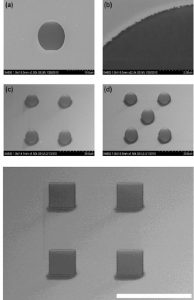Nanoparticle Electrostatic Trap for Control of Charged Particles

OTT1162
Applications
Microscopy, molecular scale devices, and new tools for biomedical diagnosis.
Key Features
- Longer Observation – Molecules can be observed for hours rather than minutes or seconds
- Precise Control – Trapping is achieved using a simple electrostatic setup
- Reversible – Trapping can be turned on and off at will
- More Natural – Can observe molecules in solution naturally without immobilization
- Charge Selective – Confinement is dictated by charge
- Versatile – Single molecules or multiple particles can be trapped simultaneously
- Stable Trap – No active feedback system required
- Scalable – Trap arrays can be integrated into microfluidic devices
Technology
This invention provides a method of controlled and reversible trapping of charged micro- and nanoscale particles or single molecules (e.g., DNA) with an electrostatic device. This corral trap can confine single molecules in their native solution environment over controlled periods of time (e.g., hours) allowing for precise manipulation and observation. With these traps, the inventors have successfully manipulated charged polystyrene microspheres with a 2μm diameter, nanospheres with a diameter of 21 nm, and single molecules of 800 nucleotide single-stranded DNA. The inventors have also developed an algorithm and software for automated trapping that is linked to images acquired by a microscope camera.
Intellectual Property
Inventor (s)
Jorg Woehl Associate Professor, College of Letters and Science, Chemistry and Biochemistry
Christine Carlson, Senior Lecturer, Chemistry


